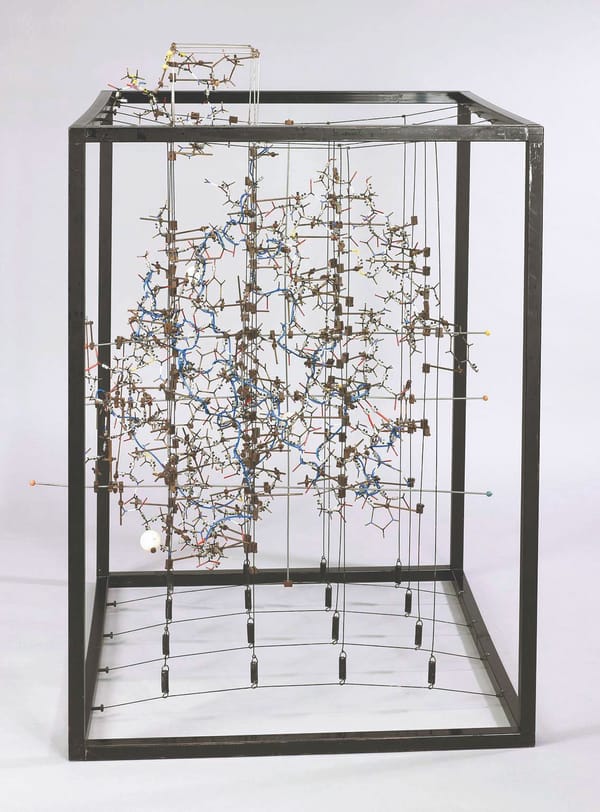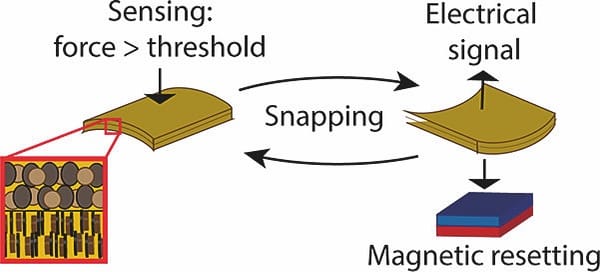Sir Geoffrey Wilkinson: Imperial’s Honoured Chemist and Recipient of the 1973 Nobel Prize in Chemistry
If you’re not a Chemistry student, or even if you are, you may have not heard of this famous Nobel laureate and Imperial alumnus. But you should.

Any student who has been to the Chemistry Café would have seen the portrait of Sir Geoffrey Wilkinson at least once. Lying at the back of the café, with more pictures dotted throughout the building, and even his research paper framed right outside, he surely must be of importance. While most of us Chemistry students would know him, his legacy is less known throughout Imperial, and even less understood past the Department of Chemistry. Who really was he? What did he actually do to contribute to science?
Sir Geoffrey Wilkinson was born and raised in Springside, a small village in West Yorkshire by Henry and Ruth Wilkinson, a master house painter and weaver. Since his youth, he developed an interest in chemistry through his uncle, who had started a company making Epsom and Glauber’s salt for pharmaceutical companies, frequently tagging along to lab and company visits.
As a teenager, he attended secondary school in Todmorden: a school with an interesting history and eventual coincidence. He was educated by the same Physics teacher as Sir John Cockcroft, who went on to receive a Nobel Prize in Physics in 1951, as Sir Wilkinson did himself in the field of Chemistry.
In 1939, he received a scholarship to study at Imperial, and eventually graduated with a PhD in 1941, during World War II. He continued his research at Imperial under the guidance of Professor Briscoe (whom the current Briscoe Lab in the Chemistry Building is named after), and joined the Atomic Energy Project in 1943, finding multiple new isotopes through the project. Having been advised against taking up an academic position in nuclear chemistry in England by Briscoe, Sir Wilkinson eventually returned to his original interest of transition metal complexes.
Back at Imperial in 1956, he devoted nearly all of his time to transition metals, especially to ruthenium, rhodium and rhenium in unsaturated hydrocarbons and metal hydrogen bonds. This lead to his first famous namesake - Wilkinson’s catalyst - a rhodium-based coordinate complex with the formula RhCl(PPh)3, which Sir Wilkinson himself popularised the use of. His catalytic organometallic studies eventually furthered the development of such coordination complexes in these specific elements. This catalyst is also used widely in alkene hydrogenation, amongst others, such as hydroacylation or hydroboration, and even set the basis for ongoing asymmetric catalysis research.
His next finding, which won him the Nobel Prize in 1973, was regarding the structure of ferrocene - a compound consisting of one iron metal centre placed between two cyclopentadienes. Curious after reading about this newly synthesised mysterious compound in the news, Sir Wilkinson worked hard to determine its structure and synthesise other similar compounds, now known as metallocenes. Metallocenes are now used as active homogenous catalysts in specialized reactions, such as olefin polymerisation, with further applications being in rechargeable lithium batteries, food packaging and carbon nanotubes.
On a personal level, he is remembered as a curious, driven and enthusiastic person. His love for Chemistry prevailed despite all setbacks, and while it may have seemed challenging to his peers and students, it proved well for his legacy.
Sir Wilkinson’s story is one of passion, hard work, and eventual success. This does not happen to everyone - in fact, it is quite unlikely to occur. It is the story of a young boy who had a passion for chemistry, chose to pursue it, and eventually achieved the prize of highest recognition in the field. He reignited interest and further developed the field of organometallics, spearheading it to become one of the major fields in chemistry and chemical research today. His contributions to the field are immense, pioneering countless catalytic processes, impacting both research and development of industrial applications. Yet, as impossible as it may sound, it truly happened in this modern day and age. One may say that it requires a person of a certain calibre to achieve such successes, however, while knowledge and academic ability were certainly main factors, it was only made possible through his passion, perseverance, and drive to succeed.
As a fellow student, I find his story quite inspiring. There are times when all of us feel like giving up - some of us think of this occasionally, others much more often. Our degrees are also so different that it is quite impossible to compare them. However, whenever we feel down or have lost hope, it is stories like these which, be it by believing that success is more probable, or by reminding ourselves of our passions, will give us a little optimism, and just a small flame of hope that everything will eventually turn out alright.
As this issue of Felix celebrates our 70th anniversary, this article celebrated and remembered the contributions of one of our former members of staff to the field of organometallic chemistry. If you would like to know more about Sir Geoffrey Wilkinson, we recommend the piece he wrote on the official Nobel Prize website, or speaking to the many professors from the Chemistry department who remember him.









